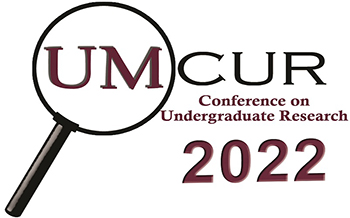Project Type
Presentation
Faculty Mentor’s Full Name
Brent Ryckman
Faculty Mentor’s Department
Cellular, Molecular, and Microbial Biology
Abstract / Artist's Statement
Human Cytomegalovirus (HCMV) causes significant disease in immunocompromised adults and congenital infections are a leading cause of hearing loss and cognitive delays. Development of a broadly effective vaccine has been limited by the lack of a method to study receptor-engagement and membrane fusion mediated by HCMV glycoproteins. Additionally, these methods have lacked a convenient way to account for the genetic diversity of the HCMV glycoproteins. Transient expression of the viral glycoproteins in human cells can induce cell-cell fusion. The induction of cell-cell fusion can be used as a surrogate measure of virus entry and is known as a cell-cell fusion assay. However, to date such assays have not adequately modeled entry because they have not required the virus receptor, or the complete set of HCMV glycoproteins. For my project, I took advantage of a glycoprotein mutant that required the complete set of HCMV glycoproteins to exhibit cell-cell fusion. By adding the full set of HCMV glycoproteins, and the appropriate receptor to the transient expression system, I demonstrated a cell-cell fusion assay that is more representative of virus entry. This method will allow for the direct comparison of all the genetic variants of each of the HCMV glycoproteins involved in the receptor binding and fusion mechanism. Moreover, my cell-cell fusion assay can be inhibited by antibodies directed against the HCMV glycoproteins, suggesting this assay will be of use in vaccine development.
Category
Life Sciences
An Improved Method to Study Viral Entry of Human Cytomegalovirus
UC 326
Human Cytomegalovirus (HCMV) causes significant disease in immunocompromised adults and congenital infections are a leading cause of hearing loss and cognitive delays. Development of a broadly effective vaccine has been limited by the lack of a method to study receptor-engagement and membrane fusion mediated by HCMV glycoproteins. Additionally, these methods have lacked a convenient way to account for the genetic diversity of the HCMV glycoproteins. Transient expression of the viral glycoproteins in human cells can induce cell-cell fusion. The induction of cell-cell fusion can be used as a surrogate measure of virus entry and is known as a cell-cell fusion assay. However, to date such assays have not adequately modeled entry because they have not required the virus receptor, or the complete set of HCMV glycoproteins. For my project, I took advantage of a glycoprotein mutant that required the complete set of HCMV glycoproteins to exhibit cell-cell fusion. By adding the full set of HCMV glycoproteins, and the appropriate receptor to the transient expression system, I demonstrated a cell-cell fusion assay that is more representative of virus entry. This method will allow for the direct comparison of all the genetic variants of each of the HCMV glycoproteins involved in the receptor binding and fusion mechanism. Moreover, my cell-cell fusion assay can be inhibited by antibodies directed against the HCMV glycoproteins, suggesting this assay will be of use in vaccine development.
